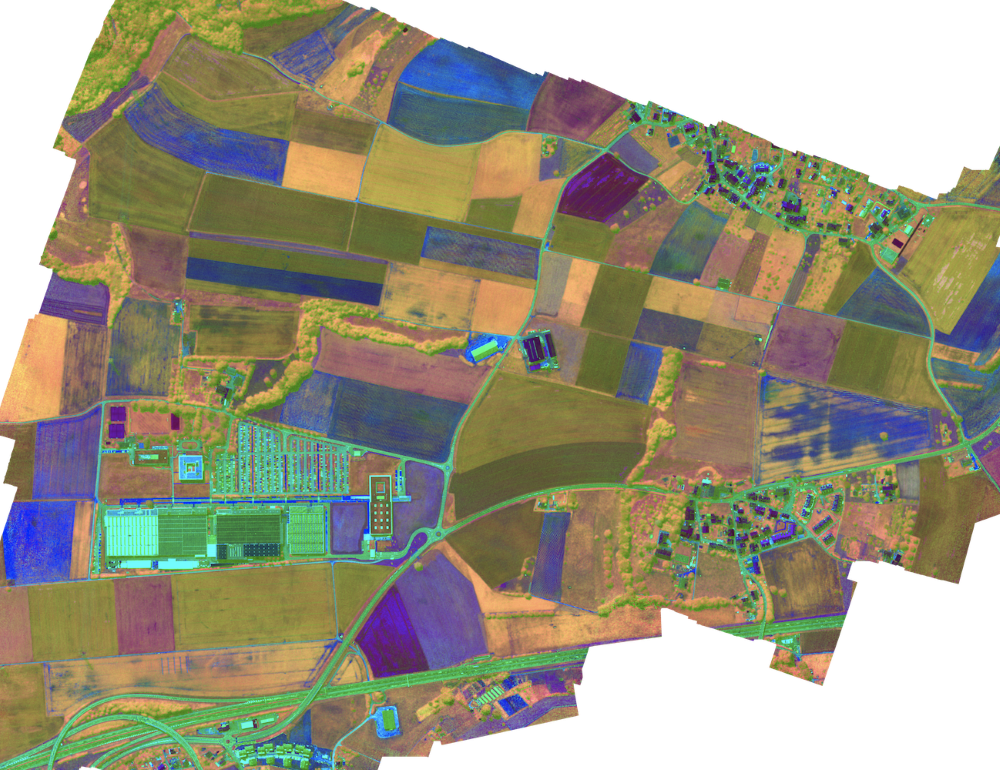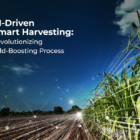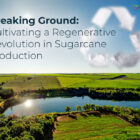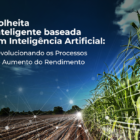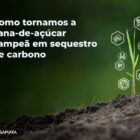Gamaya continues to be a pioneer and leading R&D specialist in commercializing and using HSI tech for agricultural applications. This article describes HSI technology, its capabilities and huge potential, as well as what Gamaya’s expertise in the field brings to the table.
Update as of August 2021: Gamaya continues to boast world-leading expertise on HSI tech and its ag applications. However, we are now focusing on bringing value to large ag producers globally with remote sensing and AI technologies through comprehensive and disruptive cloud-based precision agriculture solutions. Learn more.
What’s hyperspectral imaging?
Hyperspectral imaging is one of the most information-rich sources of remote sensing data around. It can capture the entire, continuous electromagnetic spectrum of color and light, and not just the bands of red, green and blue light that are usually visible to the human eye.
Initially developed for military and space use, hyperspectral imaging is now being applied to tackle a myriad of commercial opportunities, including in agriculture. But, it comes at a cost. These images are collected continuously over a large number of narrow bands, making the data more voluminous and complicated than other types of multispectral data. Huge data volumes combined with expensive hardware and operational and data processing complexity typically pose significant challenges for hyperspectral data handling and analysis.

NASA developed hyperspectral imaging technology for military applications and the technology is mostly utilized by military and research organizations. Today, hyperspectral imaging is not largely adopted in commercial domains, including agriculture.
Hyperspectral data collected over a large number of narrow bands in continuous spectral coverage are voluminous and more complex than multispectral data posing significant challenges in data handling and analysis.
Benefits of hyperspectral imaging over traditional imagery
- The unique benefit of hyperspectral imaging is the capability to characterize a wide range of chemical and biological traits of plants and soil by way of analyzing their reflective properties across a range of narrow spectral bands. Hyperspectral imaging extends the human vision and can capture issues that are not visible to agronomists with other technology.
- The high spectral resolution provides much more informational content to describe the analyzed object. Agriculture is a biologically complex and the most diverse environment, and spectroscopy is a powerful tool to characterize biological complexity and various crop parameters. Hyperspectral imaging technology allows catching all kinds of variability (varieties, weather, soil types). A high spectral resolution of hyperspectral imaging extends several potential issues that can be addressed using spectral imaging.
- Theoretically, one can develop a multispectral camera, when the spectral bands required to address a specific issue are known. Still, it can not be used for drastically different geographies, climate conditions, soil conditions. It is impossible to know in advance whether a particular multispectral camera with its small selection of bands would capture the relevant information about a specific phenomenon of interest.

Gamaya’s leading expertise in hyperspectral imagery and its R&D
Gamaya takes a unique approach to solve these issues and aims to make hyperspectral imaging a more cost-effective and accessible solution for farming operations around the world.
- Gamaya has developed proprietary and patented the world’s smallest and lightest fully integrated HSI camera for drone-based deployment. The camera is designed specifically for agriculture. 20x in-sensor data compression enables economically viable applications in agriculture.
- Our proprietary lightweight hyperspectral camera can be attached easily to drones, aircraft and other remote sensing devices to measure the visible, near- and infrared light portions of the electromagnetic spectrum — providing more profound insights about plants and fields than has ever been possible.
- Patented HSI sensor calibration system: Researchers have been using HSI for years to characterize specific crop issues and crop physiology based on the ground measurements of crop properties. Most of them managed to establish a correlation, developed models to diagnose a particular crop issue using HSI, and published numerous publications and research papers. However, most of these models fail when they are applied in a large-scale and commercial environment, affected by several factors, such as soil types, weather conditions, crop variety, growing practices, etc. Calibration of HSI cameras has not been taken into account not just by researchers, but also by some satellite companies and well-established organizations.
- HSI data processing : this is a very challenging aspect which is addressed by Gamaya by tightly integrating our hardware with data processing software. The camera is specifically designed to efficiently provide a maximum amount of information when paired with our analytical software. The HSI data processing includes multiple steps, including the atmospheric correction, to account for the interaction of solar radiation with the atmosphere.
- Interpretation of imaging data: Gamaya has also developed machine learning and computer vision algorithms that power our crop models and help them deal effectively with the complexity of data ingested. This way, we can provide robust analysis and crop management advice for all kinds of challenges presented by the diverse conditions of crops.
- Our ability to cross-calibrate a wide range of imaging sensors, including the available RGB and multispectral drone and space-borne imaging data sources. Importantly, any imaging data source is only as good as its calibration. In most scenarios, a small number of well-calibrated bands is superior to a large number of uncalibrated ones. This is a crucial trade-off that few companies in the world understand.
First published: August 2020
